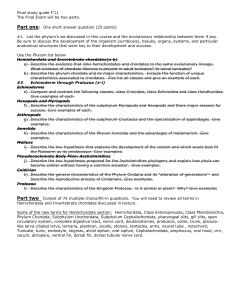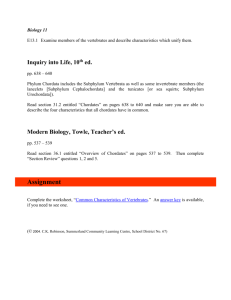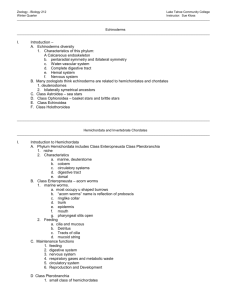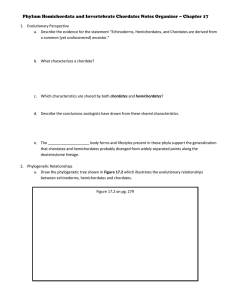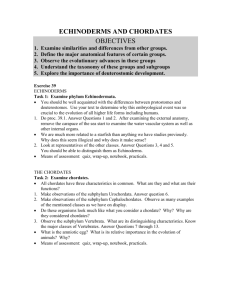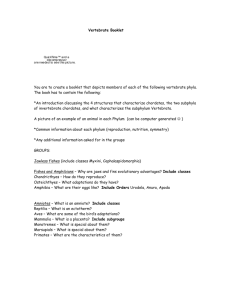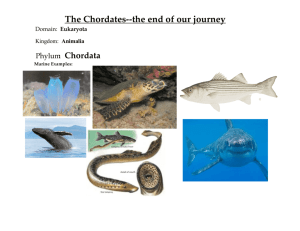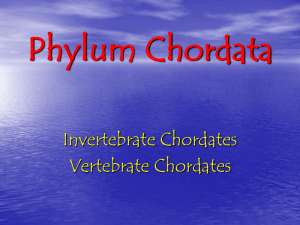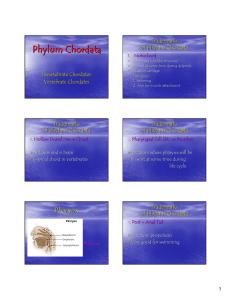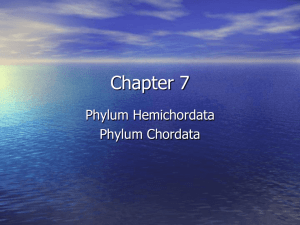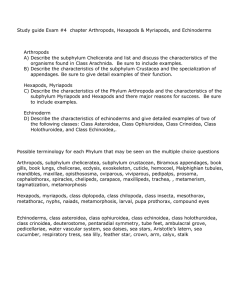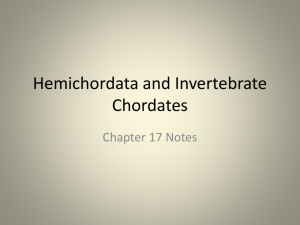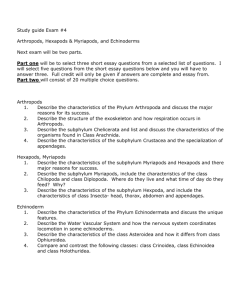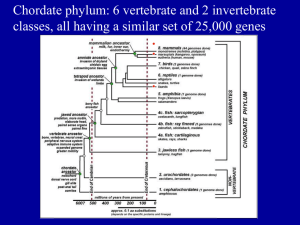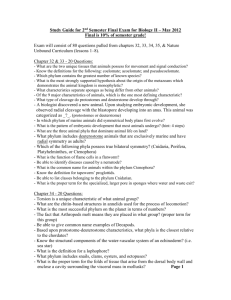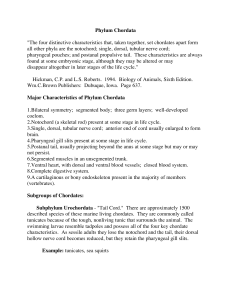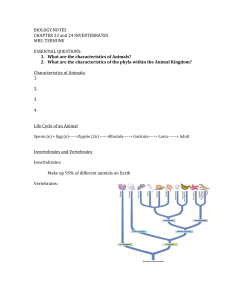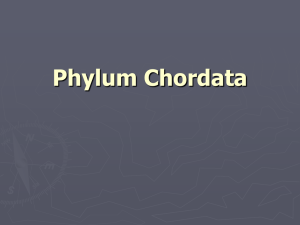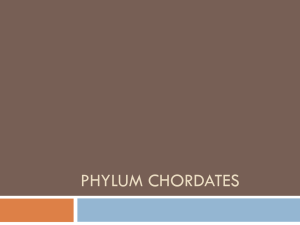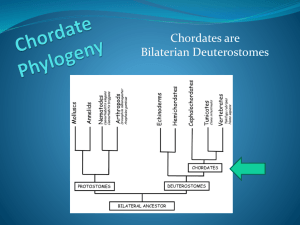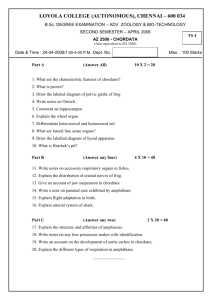Study guide Exam #4 chapter 14, 15, and 16
advertisement
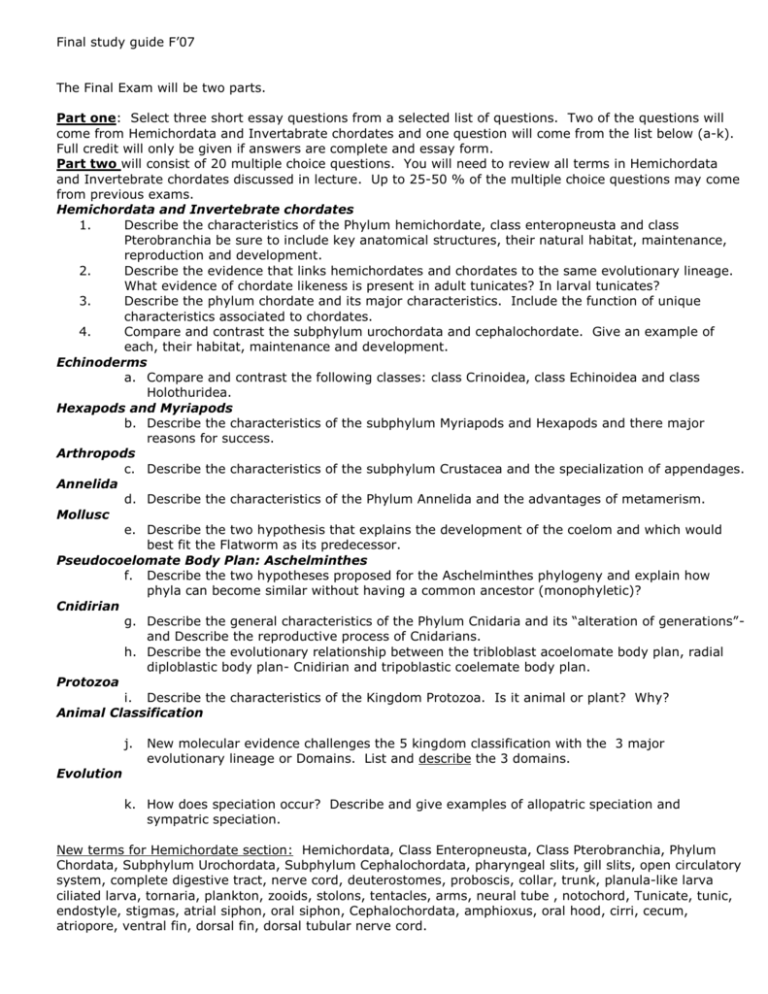
Final study guide F’07 The Final Exam will be two parts. Part one: Select three short essay questions from a selected list of questions. Two of the questions will come from Hemichordata and Invertabrate chordates and one question will come from the list below (a-k). Full credit will only be given if answers are complete and essay form. Part two will consist of 20 multiple choice questions. You will need to review all terms in Hemichordata and Invertebrate chordates discussed in lecture. Up to 25-50 % of the multiple choice questions may come from previous exams. Hemichordata and Invertebrate chordates 1. Describe the characteristics of the Phylum hemichordate, class enteropneusta and class Pterobranchia be sure to include key anatomical structures, their natural habitat, maintenance, reproduction and development. 2. Describe the evidence that links hemichordates and chordates to the same evolutionary lineage. What evidence of chordate likeness is present in adult tunicates? In larval tunicates? 3. Describe the phylum chordate and its major characteristics. Include the function of unique characteristics associated to chordates. 4. Compare and contrast the subphylum urochordata and cephalochordate. Give an example of each, their habitat, maintenance and development. Echinoderms a. Compare and contrast the following classes: class Crinoidea, class Echinoidea and class Holothuridea. Hexapods and Myriapods b. Describe the characteristics of the subphylum Myriapods and Hexapods and there major reasons for success. Arthropods c. Describe the characteristics of the subphylum Crustacea and the specialization of appendages. Annelida d. Describe the characteristics of the Phylum Annelida and the advantages of metamerism. Mollusc e. Describe the two hypothesis that explains the development of the coelom and which would best fit the Flatworm as its predecessor. Pseudocoelomate Body Plan: Aschelminthes f. Describe the two hypotheses proposed for the Aschelminthes phylogeny and explain how phyla can become similar without having a common ancestor (monophyletic)? Cnidirian g. Describe the general characteristics of the Phylum Cnidaria and its “alteration of generations”and Describe the reproductive process of Cnidarians. h. Describe the evolutionary relationship between the tribloblast acoelomate body plan, radial diploblastic body plan- Cnidirian and tripoblastic coelemate body plan. Protozoa i. Describe the characteristics of the Kingdom Protozoa. Is it animal or plant? Why? Animal Classification j. New molecular evidence challenges the 5 kingdom classification with the 3 major evolutionary lineage or Domains. List and describe the 3 domains. Evolution k. How does speciation occur? Describe and give examples of allopatric speciation and sympatric speciation. New terms for Hemichordate section: Hemichordata, Class Enteropneusta, Class Pterobranchia, Phylum Chordata, Subphylum Urochordata, Subphylum Cephalochordata, pharyngeal slits, gill slits, open circulatory system, complete digestive tract, nerve cord, deuterostomes, proboscis, collar, trunk, planula-like larva ciliated larva, tornaria, plankton, zooids, stolons, tentacles, arms, neural tube , notochord, Tunicate, tunic, endostyle, stigmas, atrial siphon, oral siphon, Cephalochordata, amphioxus, oral hood, cirri, cecum, atriopore, ventral fin, dorsal fin, dorsal tubular nerve cord.
